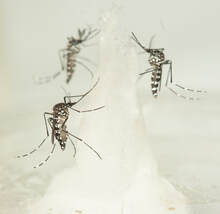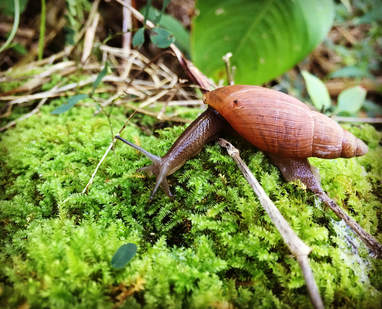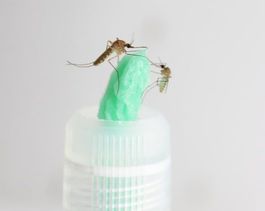The Medeiros Lab Hui uses field, laboratory, mathematical, and statistical techniques to clarify patterns of microbial symbiosis, primarily among metazoan hosts. We seek to resolve drivers of diversity among host-associated microbiomes, and the impact of microbial symbiosis on host health and performance in their environment.
Form and function of host-associated microbiotas

Host-associated microbiomes are diverse communities of bacteria, archaea, fungi, eukaryotes, and viruses that live in symbiosis with multicellular host organisms and modulate the performance of this host in its environment. This modulation of organismal function scales to impact several community and ecosystem scale processes, such as the population growth rate of hosts, flow of energy among a food web, the outcome of ecological interactions, and the transmission of infectious disease. Our lab studies this process broadly, using primarily invertebrate models, and leverages our expertise in community ecology to understand how host-associated microbiome diversity forms in nature. Current projects focus on the role of the environmental microbiome diversity in modulating the flow of energy up food chains, and the impact of microbiome diversity on vectors of infectious disease and the maintenance of vector-borne pathogens among host populations.
Ecological and environmental determinants of pathogen transmission

Hawai‘i offers a superb system to study the ecological and environmental drivers of pathogen transmission. Hawai‘i has many simple pathogen transmission systems characterized by a low diversity of host, vector, and parasite species. These simple networks offer a greater potential to tease apart transmission dynamics from field-collected samples and facilitates comparisons between data generated in the lab with those generated in the field. Moreover, Hawai‘i supports large environmental gradients in precipitation and temperature over relatively short geographic distances, greatly facilitating natural experiments to understand pathogen transmission. Our lab uses a combination of carefully controlled experimentation and field sampling across natural gradients to investigate the transmission dynamics of 1) Leptospirosis (with Dr. Amber Wright), 2) rat lung worm (with Dr. Robert Cowie and Dr. Amber Wright), and 3) avian malaria and pox.
Heterogeneity in the vectorial capacity of wild mosquitoes

Numerous intrinsic and extrinsic factors modulate the capacity of mosquito populations to vector infectious pathogens between hosts. For instance, gradients in temperature, resource abundance, and competition during the mosquito larval stage have been demonstrated to influence vector competence and life-history traits of adults that affect vectorial capacity. To date, these studies have occurred mostly under controlled laboratory conditions and it remains unclear how natural gradients in temperature, resource abundance, and competition influence the vectorial capacity of wild mosquitoes. Our work investigates the role of environmental and biotic gradients in contributing to spatial heterogeneity in mosquito-borne disease transmission.